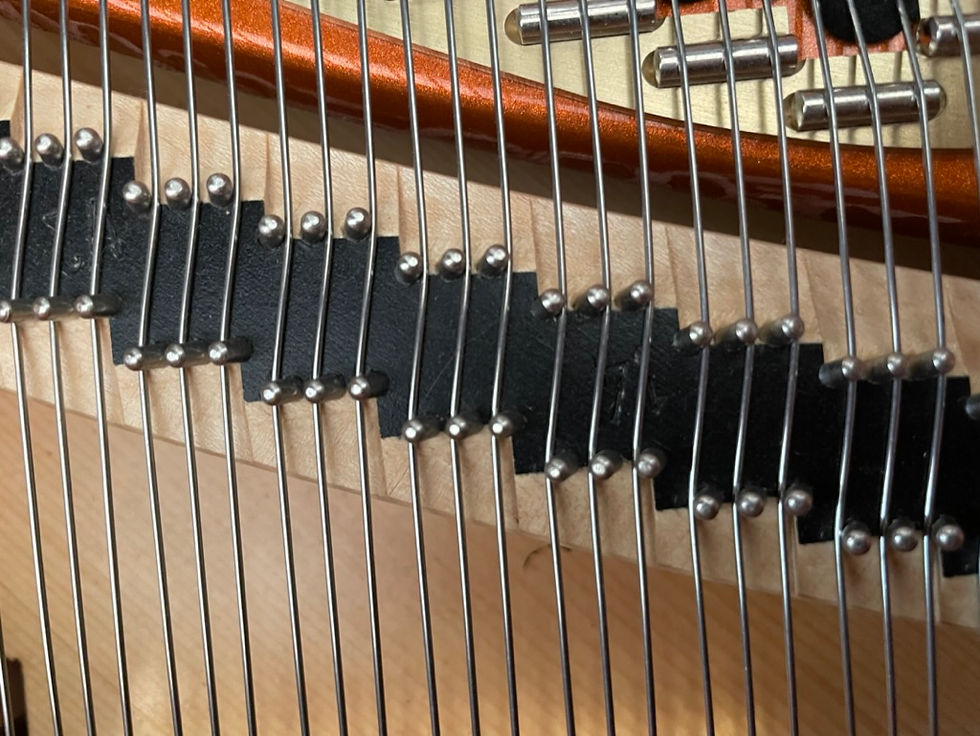Piano Care & Maintenance Guidelines
- Apr 22, 2020
- 3 min read
Updated: Jun 1, 2020
Regular care and maintenance will protect your investment of a new or used piano for a lifetime. Following these steps will ensure the pleasure and joy of use, provide a consistent, responsive touch for the ease of playing, and keep your instrument elegant and beautiful.
There are two main types of care and maintenance: routine maintenance and long term maintenance.
Routine maintenance is tuning, cleaning, and ensuring a stable environment.
Tuning
Your piano should be tuned two to four times per year or more depending on your ear’s demands.* The seasonal change in temperature and humidity will expand and contract the soundboard, changing the tension of the strings. This tension change causes fluctuation of pitch. A stable climate is essential for stable tunings. Please refer to Climate Recommendation below for more information.
New pianos should be tuned four times the first year or more to provide stability as part of the settling in process. You should not wait “until the piano is settled in” to tune it. Tuning is an essential part of the settling in process.
During regular routine service visits, your technician will often make minor adjustments to the piano to take care of seasonal issues that may periodically appear.
Cleaning
Cleaning the outside of the piano is essential for the exterior look of the piano. One often-overlooked point of service is the internal cleaning of the action and soundboard. Qualified piano technicians have tools to clean the soundboard under the strings and can properly remove the action for cleaning.
Cleaning the piano is essential to keep away critters, maintain action function, and remove dust or dirt. Dust and dirt on the soundboard and plate will capture moisture. That moisture will introduce rust to the tuning and strings degrading the integrity of the parts. Dust and dirt in the action will do the same thing and introduce excessive friction or cause parts to react sluggishly.
Climate
Ensuring a stable environment is essential to maintain the tuning and wood of the piano. Keeping a relative humidity range of 35%-50% all year would be best for the piano. The narrower the range the better it is for the piano. It is recommended that you monitor the relative humidity in close proximity of the piano with a hygrometer.
A properly installed Piano Life Saver System will assist with soundboard stability. Speak with your technician to determine which Piano Life Saver System is right for you. More Information about Piano Life Saver Systems can be found here: https://www.pianolifesaver.com/
If possible, avoid placing the piano in direct sunlight, on top of heating/cooling vents, or directly over room humidifiers.
Long term care and maintenance consists of action regulation (touch adjustment) and voicing (tone adjustment).
Action regulation
Action regulation is the adjustment of parts that control the overall responsiveness of each key. The action is primarily made of wood and felt. Felt will compress over time and wood will expand and contract with varying humidity levels. These factors will change how your piano feels. Regulating the piano is typically done every three to five years.*
Voicing
Voicing the piano changes the tone of the piano and is separate from tuning. Tuning is the changing harmonic frequency of each string. Tone adjustment or voicing is changing the color or timbre of the note. As your piano is played, the condition of the hammer felt will change. Qualified technicians can adjust the hammer to change the tonal range of your piano within its limits. Voicing is a personal preference and should be discussed with your technician prior to any work done. Voicing is typically done every two to three years or more based on your ear’s demands.*
*Pianos in concert venues, churches, and institutions will require more frequent service due to the demands of performance, unique climate conditions, and frequency of use.



Comments